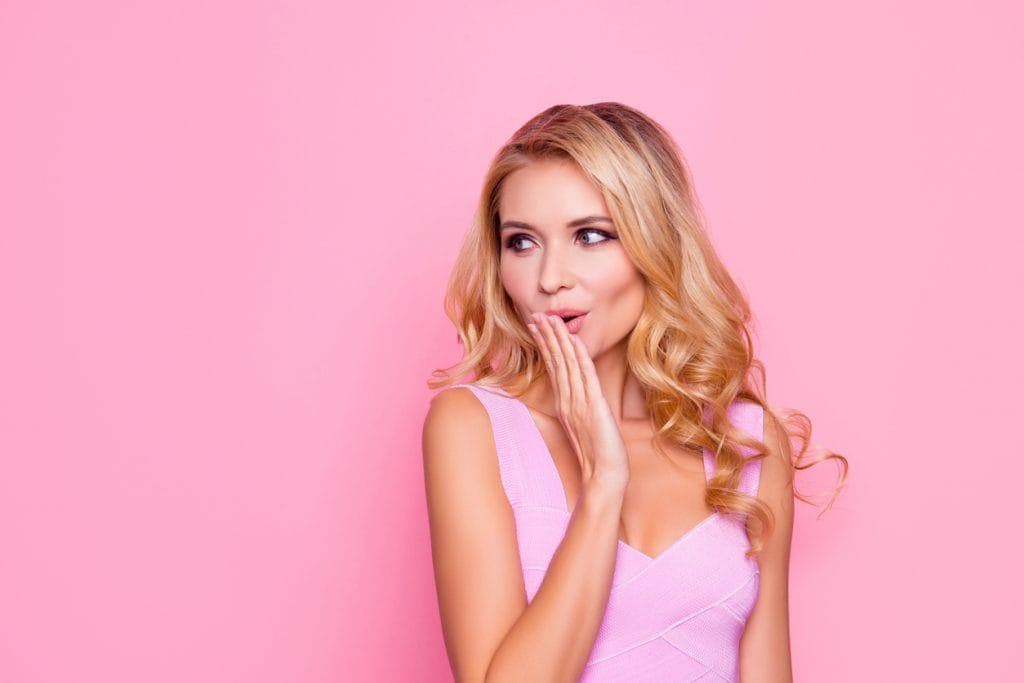In the early days of Instagram, one quick look through your feed revealed a ton of seemingly meticulous photos – of people who looked “natural.” This concept is known as the plandid – or the planned candid. Planning the shots ahead of time ensures influencers get the type of image they’re looking for – one that satisfies sponsors – but one that also appeals to their audience.
The platform has reached more than 1 billion monthly users – and there’s a common theme among most of the photos on the network. You’ll notice things are almost always staged against a bright wall, with carefully arranged lattes and fancy food, Millennial pink, and color-corrected aesthetic. Images that capitalize on these trends do so well on Instagram the look became associated with the platform itself – and gradually made its way into the world beyond. Even those who don’t use Instagram have become familiar with the Instagram Wall – a place in your home with an Instagram worthy backdrop, created for the sole purpose of photography.
The Early Influencers
Influencers are the ones who capitalize on this plandid look more than anyone else – with some of them even creating photo presets in Adobe Lightroom that edit anyone’s photos to fit the aesthetic. But all trends have a shelf life – and as quickly as Instagram welcomed beach photos and Millennial pink, it’s being ushered out in favor of something different. The buzz now is that it’s no longer cool to have the manufactured look – and Instagram is now shifting to authenticity.
The New Generation of Influencers
Young influencers such as Joanna Ceddia and Jazzy Anne, along with many others, are rejecting the curated feed concept, in favor of an unfiltered, messier, and ultimately more authentic vibe. While the early generation of influencers carried DSLR cameras and learned photo editing to master the “perfect” photo, those rules don’t apply to the rising generation of influencers, who prefer to use their smartphones to take photos.
Many teens are going out of the way to make photos look worse. Huji Cam, a filter that makes your images appear to be taken with an old disposable camera, has been downloaded more than 16 million times – and younger influencers say adding grain to your photos is a big thing right now.
Reese Bluestein is a 22-year-old influencer who has gained more than 238,000 followers in a little over a year by posted unfiltered low quality photos of herself in strange outfits. She doesn’t stress about getting the perfect look for each image, or posting similar looking photos back to back. If she likes an image, she posts it, without caring about the effect it has on her overall feed.
Over the past year, we’ve seen the concept of “Instagram vs. Reality” photos growing in popularity because influencers want to make themselves more accessible. As people become more aware of how prevalent sponsored posts are, beauty influencers have started to abandon the branded shots for the ones that feature empty bottles of the products they actually use. The number of accounts dedicated to calling out celebrities and influencers for the cosmetic procedures they’ve had is rising. Influencers are speaking out about the burnout and stress that comes with trying to maintain perfection, which is fostering the growth in authenticity.
James Nord, the CEO of Fohr, an influencer-management platform, says he sees this shift play out in his clients’ numbers every day. “What worked for people before doesn’t work anymore,” he says. “For the first time, influencers are coming up against this problem of, How do I continue to grow as tastes change?”
He says 60% of the influencers in his network with more than 100,000 followers are losing followers month over month. Just a year ago, you could post a photo of well manicured hands around a coffee cup and get lots of engagement. Now, doing something like that will make people unfollow. Influencers who are still standing in front of those Instagram walls are struggling – and will need to change their approach if they want to maintain their influencer status.
Instagram itself could be in part responsible for the evolution. Instagram began as a purely visual feed of filtered photos, but has morphed itself into something different. Now, it has grown into a true social network where photos and videos are competing against stories, GIFs, and IGTV for attention.
Why the Change?
Instagram walls and museums were built so that normal people could easily take influencer-quality photos. However, the photos worked so well they became commonplace. As a result, they no longer resonate with people like they used to, and now we’re living in “influencer overload.”
The stress of aiming for perfection is just too much. One influencer, LA-based Sarah Peretz, known for her curated, hyper-saturated feed, says she spend months looking for a wall of a certain color – and she interrupted a vacation to take a photo against a roadside casino’s orange wall, she’d had enough. She started shifting her feed away from the traditional aesthetic and experimented with more creative photography. She knew her audience was bored with it, and more interested in Instagram Stories.
As what is “ideal” on Instagram is shifting, brands are on the lookout for ways they can catch (or create) the next wave. People are just looking for stuff they can relate to, so being real is a trend that’s catching on and will stick around a while.
How do you feel about meticulously planned feeds? Are you looking forward to the authenticity movement? Share your thoughts in the comments below.
1 Comments
Leave a Reply
Contact us today to get the conversation started!











This is ever evolving and will change with generations